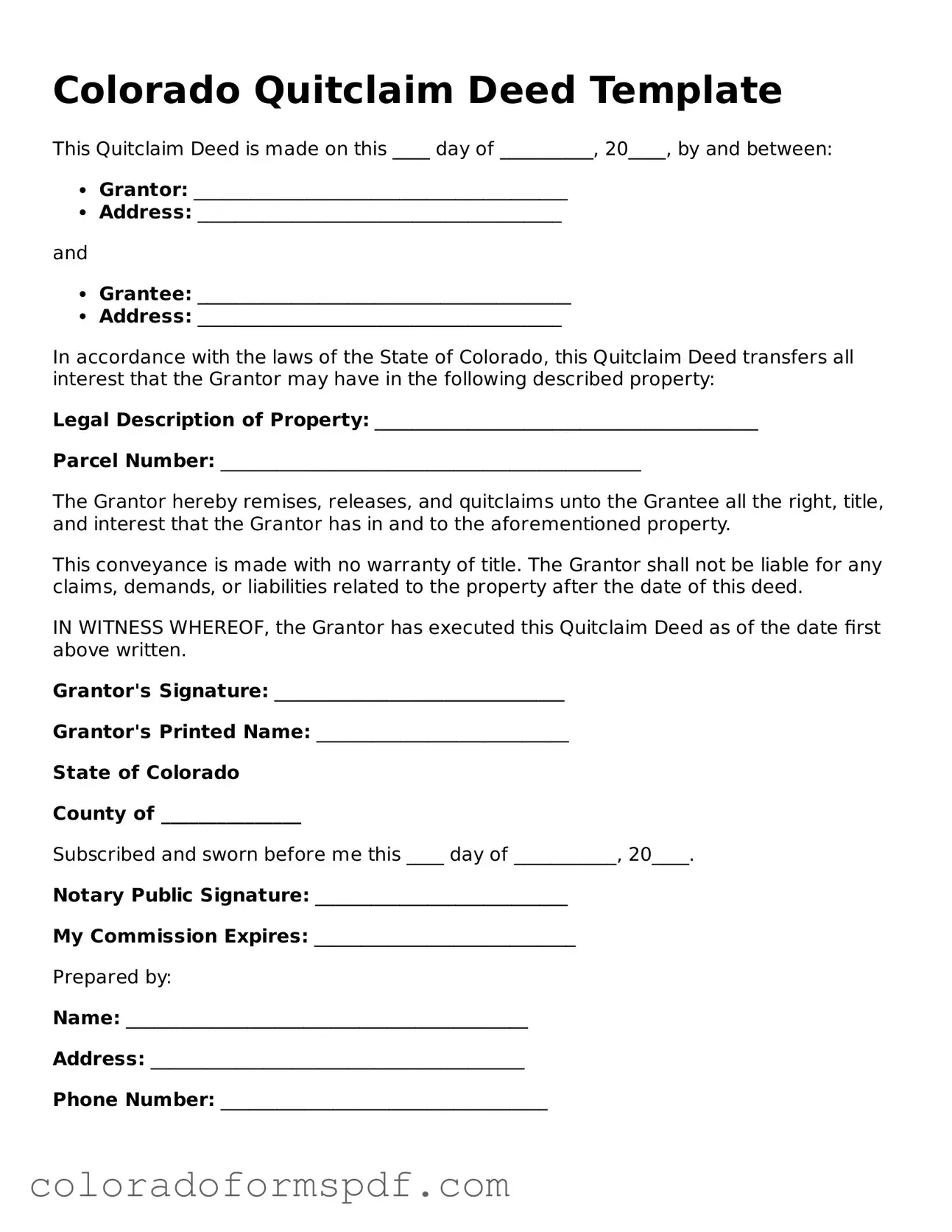Official Quitclaim Deed Template for Colorado State
A Colorado Quitclaim Deed is a legal document used to transfer ownership of real estate from one party to another without any warranties or guarantees regarding the title. This form is often utilized in situations where the parties know each other, such as family transfers or divorce settlements. Understanding its implications is essential for anyone involved in property transactions in Colorado.
Get Document Online
